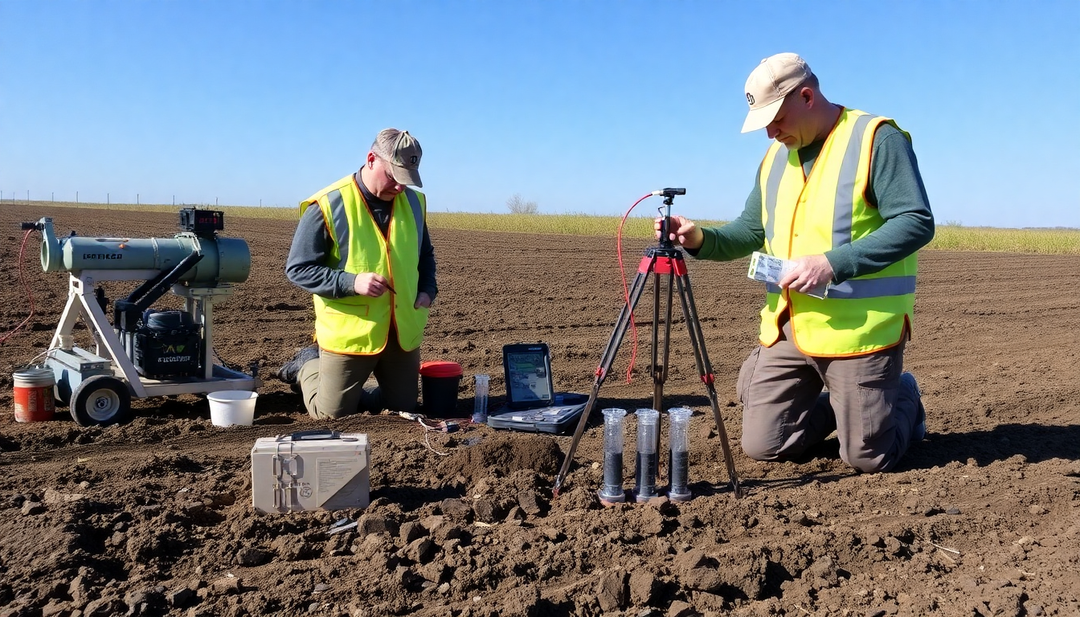What are COHVs?

Introduction
Inert waste management is a major issue in the current environmental context. The law of December 12, 2014 was published in France to regulate the conditions for admission of this waste. On the one hand, in facilities falling under headings 2515, 2516, 2517. On the other hand, in storage facilities falling under heading 2760 of the nomenclature of classified installations. At the heart of this regulation are Volatile Organic Halogenated Compounds (VOCs), substances whose analysis is crucial to ensure environmental compliance. In this article, we will explore the definition of VOCs and explain why their analysis is essential within the framework of the 2014 law.
COHV: What are we talking about?
VOCs are a group of organic chemical compounds containing at least one halogen atom (fluorine, chlorine, bromine, iodine). They are also known as BTEX. Furthermore, they exhibit significant volatility. Furthermore, these substances, often resulting from industrial processes or chemical degradation, have adverse impacts on the environment and human health. As a result, VOCs are known for their persistence in the environment and their ability to migrate through air, water, and soil.
Some compounds belonging to the VOC category are also called BTEX (Benzene, Toluene, Ethylbenzene, Xylene). Indeed, these substances are volatile aromatic hydrocarbons that are frequently associated with petroleum products as well as industrial activities.
Let's now take a closer look at the harmful impacts of Volatile Organic Halogenated Compounds (VOCs) on the environment and human health:
- Environmental impacts
- Soil contamination
Due to their persistence, VOCs can accumulate in soils over time. This can compromise the quality of agricultural land, hinder plant growth, and disrupt the balance of terrestrial ecosystems.
Water pollution
Volatile Halogenated Organic Compounds (VOCs) have the potential to migrate into groundwater and contaminate drinking water sources. This can have serious consequences for aquatic ecosystems and pose a direct threat to aquatic biodiversity.
Additionally, some HVOs can evaporate into the air, contributing to air pollution. This can have implications for ambient air quality, with consequences for the respiratory health of local populations.

Impact on wildlife
VOCs can affect wildlife through the food chain. Studies show that these compounds can bioaccumulate, leading to higher concentrations in organisms higher in the food chain.
Impacts on human health
Acute toxicity
Some VOCs can cause immediate toxic effects upon acute exposure. As a result, this can lead to health problems. For example:
- skin irritations;
- respiratory problems;
- allergic reactions.
Carcinogenicity
Some VOCs are known to have carcinogenic potential. Prolonged exposure to these substances may increase the risk of cancers related to the target organs of VOCs.
Endocrine disorders
Some HVCs can disrupt the human endocrine system, affecting normal hormone levels. This can affect growth, development, and reproduction.
Neurotoxic effects
Some COHVs can have adverse effects on the nervous system, leading to neurological disorders, behavioral disturbances, and cognitive deficits.
In summary, VOCs pose significant risks to the environment and human health. This is due to their persistence, their ability to move through different ecosystem compartments, as well as their potential short- and long-term toxic effects. Therefore, regular monitoring and analysis of these compounds is essential to mitigate these risks and ensure responsible waste management. Furthermore, the law of December 12, 2014, aims to regulate activities related to inert waste in certain plants. One of the key requirements of this legislation is the analysis of VOCs to assess the quality of the inert waste admitted to these facilities. Several reasons justify this importance:
Environmental preservation
VOCs can pollute soil and groundwater, leading to serious consequences for biodiversity and the quality of natural resources. VOC analysis helps identify and quantify these substances, facilitating the implementation of preventive measures.
Protection of human health
Some HCOs can have toxic effects on human health, particularly in cases of prolonged exposure. The 2014 law controls the presence of these compounds in inert waste to ensure the safety of workers and the public.
Regulatory compliance
COHV analysis is a key element in ensuring that facilities comply with environmental standards defined by legislation. Their results can be used to determine whether inert waste is compliant. This avoids legal and financial consequences.
COHV analysis methodology
To ensure compliance, operators of facilities subject to the 2014 Act must analyze for HVOs. These procedures typically involve sophisticated analytical methods, such as gas chromatography (GC) or mass spectrometry, which can accurately detect and quantify these compounds.
Conclusion
Finally, H2O analysis is a crucial element within the framework of the law of December 12, 2014. This practice contributes not only to the preservation of the environment, but also to the protection of human health and the regulatory compliance of industrial facilities. Moreover, by investing in robust analysis methodologies, industry players can play a vital role in promoting responsible inert waste management.



